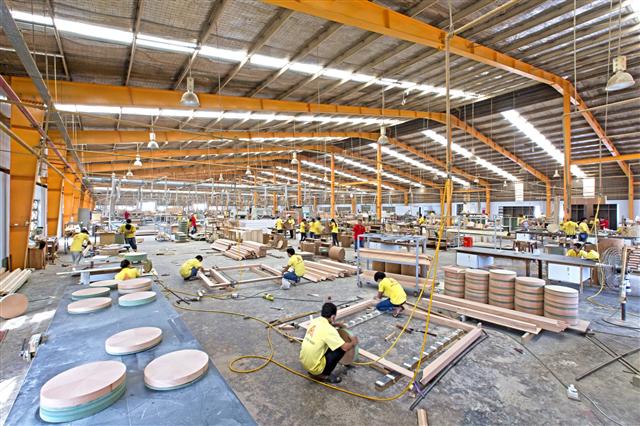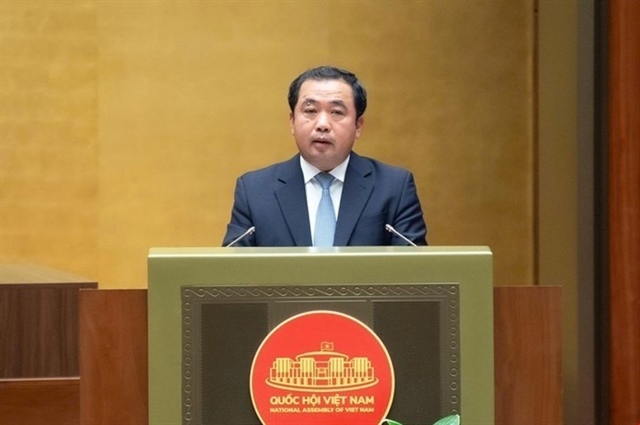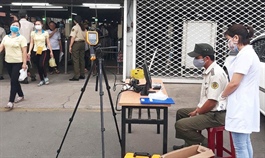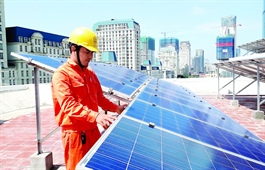Vietnam mulls ways to overcome raw material shortages
Vietnam mulls ways to overcome raw material shortages
Textiles, footwear, electronics, and production of plastic items are leading in terms of export turnover but also depend mainly on the import of raw materials. Therefore, reducing dependence on imported raw materials is a key challenge facing enterprises and relevant agencies and sectors.
|
According to data from the Vietnam Industry Agency (VIA) under the Ministry of Industry and Trade (MoIT), 60 percent of fabric materials are imported from China, 42 percent of electronic components are imported from the Republic of Korea (RoK), and over 64 percent of auto parts and components are imported from China, the RoK and Japan. This troubling dependence on foreign input was particularly evident when complications of the Covid-19 pandemic disrupted the supply chains of raw materials, leading to increased costs and prices.
Many textile and garment industry manufacturers are dealing with increases in the price of imported cotton and yarn since late 2020. According to the Vietnam Cotton and Spinning Association (VCOSA), since the beginning of this year, the price of cotton materials imported from Brazil, the US, India and other markets to Vietnam has averaged US$1,625 per tonne, up 0.87 percent over the same period last year, and US$1,917 per tonne from Australia.
|
Regarding the leather and footwear industry, according to Nguyen Duc Thuan, Chair of the Vietnam Leather and Footwear Association (LEFASO), 60 percent of raw materials and accessories for the industry are dependent on imports. Although export orders of leather and footwear enterprises have improved since the beginning of this year, they are still facing problems in ensuring raw material supplies.
As for the wood processing industry for export, although Vietnam has a large production capacity, and technical capability to meet strict requirements of discerning markets such as Europe, Japan, and the US, wood materials for export must satisfy the requirements of forest certification. Given Vietnam’s difficulties in meeting those requirements, it still has to import input materials for wood product exports.
Domestic support industry is the answer
To overcome the dependence on imported materials and attain self-sufficiency in this regard, Vietnam is urgently seeking to develop domestic support industries.
According to Dr. Majo George from the School of Business and Management of RMIT University, Vietnam can learn from Bangladesh, where textile enterprises have modernized fabric production methods to become self-sufficient in raw material resources.
LEFASO Chairman Nguyen Duc Thuan assessed that in order to develop Vietnam’s support industries, enterprises need financial support in terms of preferential loan and tax reduction mechanisms to make product prices more competitive compared to imports from China and other countries.
Regarding investment in support industries, Chair of Ho Chi Minh City Association of Mechanical, Electrical Enterprises Do Phuoc Tong said the first step is providing production sites, then machinery, equipment, technology, and management systems. But investment and development depend not only on capacity but also on state policies and support motivating enterprises to be bolder in their investments. However, these processes must complement each other because businesses cannot manage on their own but they also cannot only sit idly and wait for the state’s support.
| The Ministry of Industry and Trade is developing a draft to amend Decree 111/2015/ND-CP on the development of support industries. Under the new mechanism, the state will back up to 50 percent of credit loans for investment in supporting industries. The amendment also focuses on developing raw materials for the textile and footwear industries to meet the requirements of rules of origin in free trade agreements, developing human resources, and meeting the needs of enterprises in terms of design, research and more. |


























